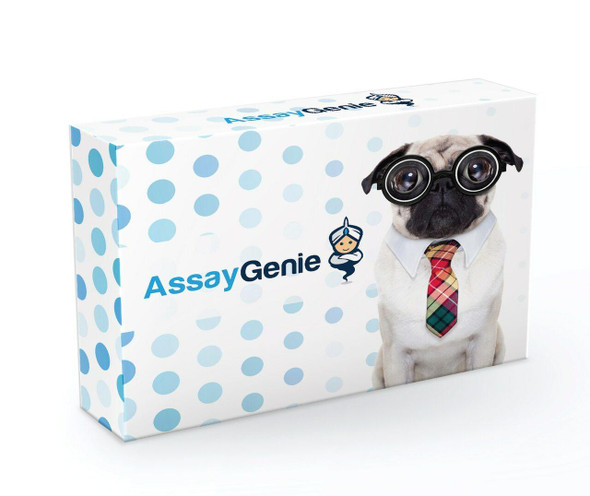| Synonyms: | IKZF1, CVID13, Hs.54452, IK1, IKAROS, LYF1, LyF-1, PPP1R92, PRO0758, ZNFN1A1 |
| Background: | This gene encodes a transcription factor that belongs to the family of zinc-finger DNA-binding proteins associated with chromatin remodeling. The expression of this protein is restricted to the fetal and adult hemo-lymphopoietic system, and it functions as a regulator of lymphocyte differentiation. Several alternatively spliced transcript variants encoding different isoforms have been described for this gene. Most isoforms share a common C-terminal domain, which contains two zinc finger motifs that are required for hetero- or homo-dimerization, and for interactions with other proteins. The isoforms, however, differ in the number of N-terminal zinc finger motifs that bind DNA and in nuclear localization signal presence, resulting in members with and without DNA-binding properties. Only a few isoforms contain the requisite three or more N-terminal zinc motifs that confer high affinity binding to a specific core DNA sequence element in the promoters of target genes. The non-DNA-binding isoforms are largely found in the cytoplasm, and are thought to function as dominant-negative factors. Overexpression of some dominant-negative isoforms have been associated with B-cell malignancies, such as acute lymphoblastic leukemia (ALL). |
| UniProt Protein Function: | Ikaros: a transcription factor of the ikaros C2H2-type zinc-finger protein family. Binds and activates the enhancer (delta-A element) of the CD3-delta gene. Functions in the specification and the maturation of the T-lymphocyte. Also interacts with a critical control element in the TDT (terminal deoxynucleotidyltransferase) promoter as well as with the promoters for other genes expressed during early stages of B- and T-cell development. Deletions in Ikaros have been observed in a subset of pre-B-cell acute lymphoblastic leukemia (B-ALL) cases. Seven alternatively spliced human isoforms have been described. |
| UniProt Protein Details: | Protein type:C2H2-type zinc finger protein; DNA-binding; Transcription factor Chromosomal Location of Human Ortholog: 7p12.2 Cellular Component: centric heterochromatin; protein complex; cytoplasm; nucleus Molecular Function:DNA binding; sequence-specific DNA binding; protein heterodimerization activity; metal ion binding; transcription factor activity Biological Process: Peyer's patch development; thymus development; transcription, DNA-dependent; negative regulation of transcription from RNA polymerase II promoter; positive regulation of multicellular organism growth; chromatin modification; cell cycle; lymph node development; positive regulation of neutrophil differentiation; retina development in camera-type eye; natural killer cell differentiation; B cell differentiation; forebrain development; positive regulation of NK T cell differentiation; mesoderm development; positive regulation of transcription from RNA polymerase II promoter; T cell differentiation |
| NCBI Summary: | This gene encodes a transcription factor that belongs to the family of zinc-finger DNA-binding proteins associated with chromatin remodeling. The expression of this protein is restricted to the fetal and adult hemo-lymphopoietic system, and it functions as a regulator of lymphocyte differentiation. Several alternatively spliced transcript variants encoding different isoforms have been described for this gene. Most isoforms share a common C-terminal domain, which contains two zinc finger motifs that are required for hetero- or homo-dimerization, and for interactions with other proteins. The isoforms, however, differ in the number of N-terminal zinc finger motifs that bind DNA and in nuclear localization signal presence, resulting in members with and without DNA-binding properties. Only a few isoforms contain the requisite three or more N-terminal zinc motifs that confer high affinity binding to a specific core DNA sequence element in the promoters of target genes. The non-DNA-binding isoforms are largely found in the cytoplasm, and are thought to function as dominant-negative factors. Overexpression of some dominant-negative isoforms have been associated with B-cell malignancies, such as acute lymphoblastic leukemia (ALL). [provided by RefSeq, May 2014] |
| UniProt Code: | Q13422 |
| NCBI GenInfo Identifier: | 3913926 |
| NCBI Gene ID: | 10320 |
| NCBI Accession: | Q13422.1 |
| UniProt Related Accession: | Q13422 |
| Molecular Weight: | |
| NCBI Full Name: | DNA-binding protein Ikaros |
| NCBI Synonym Full Names: | IKAROS family zinc finger 1 |
| NCBI Official Symbol: | IKZF1Â Â |
| NCBI Official Synonym Symbols: | IK1; LYF1; LyF-1; CVID13; IKAROS; PPP1R92; PRO0758; ZNFN1A1; Hs.54452Â Â |
| NCBI Protein Information: | DNA-binding protein Ikaros |
| UniProt Protein Name: | DNA-binding protein Ikaros |
| UniProt Synonym Protein Names: | Ikaros family zinc finger protein 1; Lymphoid transcription factor LyF-1 |
| Protein Family: | Ikaros family zinc finger protein |
| UniProt Gene Name: | IKZF1Â Â |
| UniProt Entry Name: | IKZF1_HUMAN |








